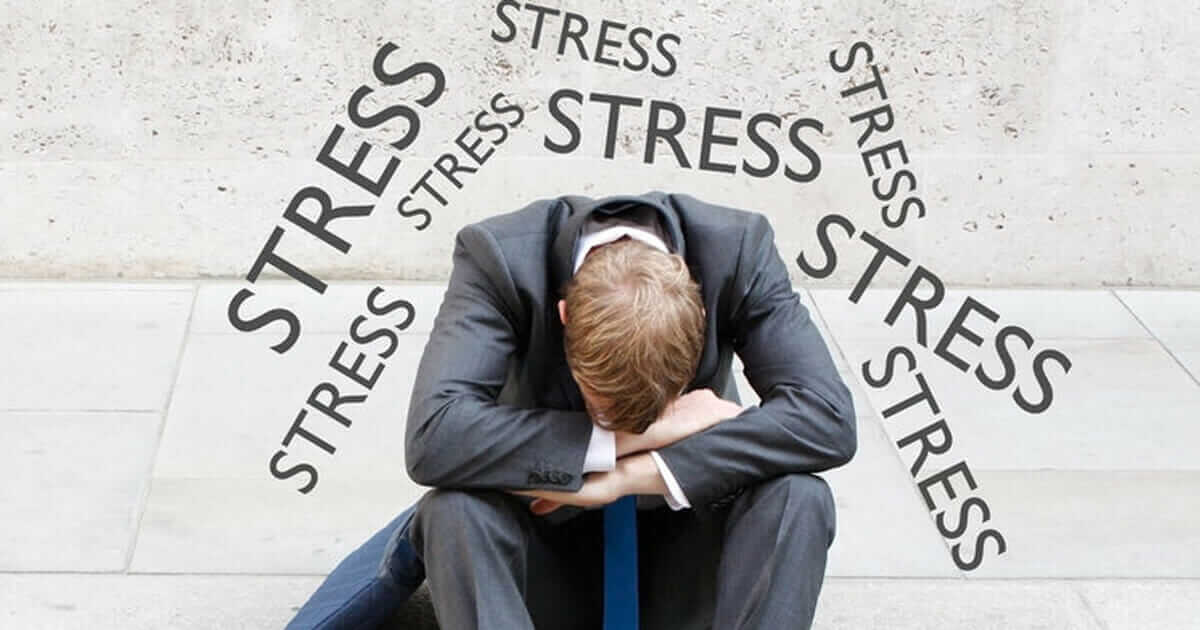Depression can drive a person towards self-harm, strained relationships, self-isolation, loneliness, and/or even suicide if left untreated or unaddressed.
Let’s talk more about Signs, Symptoms, and the treatment for depression.
There’s more to depression than just being sad.
It’s a persistent mental health issue that affects the daily lives of millions of Americans as well as other nationalities from across the globe.
What is High-Functioning Depression?
- Also Known As: Persistent depressive disorder or PDD (not to be confused with postpartum depression) refers to a form of persistent depression where the patient can still function normally. Currently, it’s known as high-functioning depression but previously it was instead known as dysthymia.
- The Deal with Impairment: When you’re impaired with major depression, you’re unable to fully function in one or several areas of daily life. You might end up unable to hold down a job or fail to perform well in academics.
- Relationship Blues: You might even fail to manage healthy relationships or avoid social activities altogether, among many other dysfunctional behaviors. However, such a mental illness can be less severe as well.
- Muted Symptoms: With major depression, the symptoms hit you stronger but tend to be short-lived. With high-functioning depression, the symptoms end up less severe and you can function normally.
- Although You’re Functioning Normally: Even though you’re functioning normally it doesn’t make PDD the lesser type of depression. Living with such a mental illness and its symptoms for two years can have its own toll.
- A Persistent Illness: When you have a high-functioning depression or mental illness condition, you can live life normally most of the time. However, you’re not fully functioning necessarily. There are days that can get rough on you.
- Some Impairment: Aside from the danger of appearing okay even when you’re not, you’re also impaired when undergoing PDD. Even as you strive through the significant symptoms, it takes a toll on your mental health.
Signs and Symptoms

When it comes to high-functioning depression in particular, its signs and symptoms resemble those caused by major depression. However, they feel more muted or less severe.
However, it involves changes involving sleeping and eating habits, difficulty concentrating, low self-esteem, fatigue, and hopelessness. Symptoms of PDD persist on most days, thus giving you a persistent mellow mood that lasts until 2 years or more.
Unlike major depression that hits you hard from the onset, this depressive moody state will have you struggle internally, but you can still function and go about your everyday life.
Diagnosis of High-Functioning Depression
The mental health industry recognizes PDD or high-functioning depression as an actual health condition.
You thus require a diagnosis by a mental health professional like a psychiatrist in order to confirm that you have it.
In order for a diagnosis to be made, your behaviors and mental condition should meet a certain set of criteria that describes specific symptoms.
Your General Mood
You might have PDD if you experience a depressed mood for most days and most of the day on those days.
The 2-year period of PDD is actually a minimum period that confirms a PDD diagnosis.
The depressed mood must include two or more of the following symptoms:
Rate of Occurrence
How often does the depressed mood—as characterized by the abovementioned symptoms—occur?
Does it occur on most days for two years or more without relief? Or does it occur for longer than two months instead?
In order for the diagnosis to be PDD, you should never experience a period of hypomania or mania, otherwise known as a period of time where you feel energetic and euphoric.
No roller coaster of extreme emotions.
No Other Causes
By process of elimination, the psychiatrist should conclude that your depression symptoms stem from PDD instead of substance abuse, another medical condition, or a separate type of mental illness.
High-Functioning not Fully Functioning
The depressed mood and its symptoms should cause you impairment in one or more areas of life and normal functioning, thus causing you significant distress and requiring treatment.
A Venn Diagram of Symptoms
There’s much crossover symptoms or symptomatic resemblance between PDD and major depression.
The main difference between the two involves symptom intensity, longevity, and the level of impairment.
What It Feels Like to Live with High-Functioning Depression

High-functioning depression’s diagnostic criteria gives you a better idea what it means to struggle with the mental illness in clinical terms.
However, it doesn’t paint the whole picture. It just uses a broad strokes approach to things.
In more practical terms relating to everyday life, the actual signs of PDD include the following.
- A Little Down Most of the Time: While suffering from PDD, you’ll feel a little down most of the time, as though you’re suffering from the blues. Other people might notice something’s wrong and refer to you as a downer, cynical, or gloomy.
- Ever-Present Low Mood: The issue with PDD is that the low mood doesn’t go away and it feels like relief is impossible. In contrast, the times when you feel happy feel fleeting. Your default seemingly is doom and gloom.
Feelings of Exhaustion: High-functioning depression gets characterized by feeling tired all the time, even if you’ve gotten enough sleep or even too much sleep. This makes it seem like you’re being lazy or low energy. - Self-Pity and Self-Loathing: When suffering from this type of depression, you’ll feel like you don’t deserve to be liked by others or be happy. You’ll feel bad for yourself and feel unworthy of good things.
- The High-Functioning Part of PDD: The high-functioning part of PDD allows you to do everything you’re supposed to do such as keeping the house clean, going to school, or doing the work. However, you feel like it’s a monumental effort.
- Weight Loss or Gain: Without meaning to, you might lose or gain weight. This might be because of you overeating without thinking about it or you having no appetite at all. Depression can stress you out in its own way.
- Utter Hopelessness: Often, as a PDD patient, you might feel hopeless. You might even cry a lot for seemingly no reason, but the real reason involves you feeling depressed but still functioning for the most part in spite of it.
- Partial Functional Impairment: Your impairment comes from you feeling like you can’t summon enough energy to do anything that’s more than necessary to function normally. You’re doing the bare necessities for social survival.
- People Might Not Notice: Because you do well enough at school or the office, most people will think you’re just naturally gloomy. However, it remains a challenge to focus on most tasks.
- Force Yourself to Function: Even though you’re a high-functioning depression patient, that doesn’t mean your depression is somehow easier to wave off. Many have to force themselves into engaging in social activities they don’t feel like doing.
You can also end up suffering from various seemingly unrelated complications from high-functioning like problems at school or work, relationship difficulties, chronic pain, and substance abuse as your coping mechanism.
Anyone with high-functioning depression can end up experiencing episodes of the more severe major depression.
In truth, many PDD sufferers should end up getting an episode of major depression once in their lives.
- Persistent Depression Can Become Severe: Low-level depression that persists can become a full-blown major depression in time, like how the constant crashing waves of the sea can crush rock. Such episodes can occur when you least expect it.
- Significant Differences: Although the two conditions may occur on the same person and have many similarities, they mostly differ in terms of severity and persistence. Major depression hits you stronger but fades away faster.
- Duration and Severity: Major depression and persistent depressive disorder share many of the same symptoms as seen on the above chart. However, PDD persists for at least two years while major depression episodes last about two months.
- From Bad to Worse: Long story short, the worse you’re able to cope with your PDD the more at risk it becomes full-blown major depression. Your tolerable mental illness suddenly turns into major depression where you can’t function at all.
- The High-Functioning Part Disappears: When you go from high-functioning depression to major (low-functioning or no-functioning) depression, you’ll end up so impaired you can’t perform well at work or school anymore.
- Withdrawn and Socially Impaired: You will become like an introvert while depressed, with you withdrawing into yourself and not interacting with others. This on top of neglecting your personal hygiene and self-care.
- Certain Responsibilities Become Unfulfilled: Certain responsibilities needed for normal function such as doing chores, completing assignments, and interacting with others become especially difficult while undergoing major depression.
- Symptoms of Major Depression: The shared symptoms between major and the persistent “minor” depression of PDD all become more severe or “extra” during a major depression episode. For example, you could suffer from the following.
- Extreme feelings of guilt.
- Suicidal thoughts and behaviors
- Changes in emotional affectations
- Lack of interest in activities normally enjoyed
- Psychotic symptoms such as delusions and paranoia (only for rare cases)
Preparing for Treatment
PDD is an actual thing.
Quite a number of mental illnesses end up being severe enough to impair your ability to function.
Truth be told, for a lot of mental health conditions, the diagnostic criterion for them typically involves significant impairment.
To everyone around you, they might mistake you as having no problems, which might convince you that you have no problems even though internally you’re aware that you do.
- Getting a Diagnosis: Call a therapist to establish whether or not you’re suffering from a different kind of blues. You might be clinically depressed. Don’t underestimate PDD just because it’s less severe than major depression.
- DSM-5 PDD Test: You should take a high-functioning depression test as listed in the Diagnostic and Statistical Manual of Mental Disorders (DSM-5). Quite a number of symptoms resemble those to diagnose major depression but in a less severe state.
- Most People Won’t Get It: You’re more likely to get an intervention or support from friends and family from drug addiction or alcoholism than from this type of depression. This is because this high-functioning depression can be quite hidden and you can function normally on most days.
- Misunderstanding PDD: Many wrongly view gloomy or negative thinking persons who might be suffering from PDD as those who choose to be miserable, engage in attention-seeking behavior, or wish to play the victim.
- Difficult to Detect: Just because you’re able to function or appear normal that doesn’t mean your PDD is just something you should tolerate or handle without treatment. Not only other people but the patient himself might have difficulties detecting this condition.
- If You Feel Like You Have PDD, Speak Out: Because many people don’t have an idea you’re suffering internally, you should have yourself tested through a professional in order to get proper treatment from this silent killer of your mental health.
Major depression might offer more obvious symptoms but PDD might be worse in its own way because you might even ignore it until you’re pushed to the brink.
You don’t have to struggle with a below average quality of life.
High-Functioning Depression Treatment
Self-management, self-care, and treatment from a professional can help tremendously when it comes to living with PDD so that it doesn’t push you to the point of no return.
It’s like living with a long-term disease like asthma.
- Therapy and Medications: After getting a PDD diagnosis, you can treat it with a combo of therapy and medications. You can lift your mood with a proper dosage of antidepressants. However, they take several weeks to start working.
- Trial and Error: Your doctor might have you try out different medications to see which ones work and which ones offer the least problematic side effects. As for therapy, it assists in PDD treatment by teaching patients to become more self-aware of negative patterns then avoiding them.
- Dual Diagnosis: Certain drug rehab facilities also offer dual diagnosis for mental health issues like depression in case you’re an addiction patient. Of course, you can also go the therapist office route or at least get a counselor if you can’t afford therapy.
- Cognitive Behavioral Therapy: Cognitive Behavioral Therapy (CBT), Dialectical Behavioral Therapy (DBT), mindful meditation, and many other therapeutic techniques work to actively promote self-awareness and change your way of thinking to prevent exacerbating your persistent depression.
- Outpatient Therapy: PDD can also benefit from outpatient therapy like the 12-steps system that also deals with drug and alcohol addiction. Most PDD patients recommend a focused, intensive, and well-rounded holistic approach in residential treatment programs like in Miracles Asia.
The Verdict
You should not take depression lightly.
Seek a therapist today ASAP or avail of online therapy in light of the current state of the world during the Covid-19 pandemic.
Also, you might instead get prescribed for antidepressants.
If you’re an addiction patient and/or you’re suffering from the co-occurring mental illness known as high-functioning depression or postpartum depression, you can get help overseas in a calm and secluded place by availing of a rehab tourism package.
Go to Miracles Asia Rehab in Thailand
Get in touch with Miracles Asia today because its team of experts will take care of both your addiction, and your depression through dual diagnosis and various forms of psychotherapy methods.
They have CBT, DBT, individual therapy, group therapy, and 12-step programs available to treat PDD, major depression, anxiety, ADHD, ADD, and so forth.







